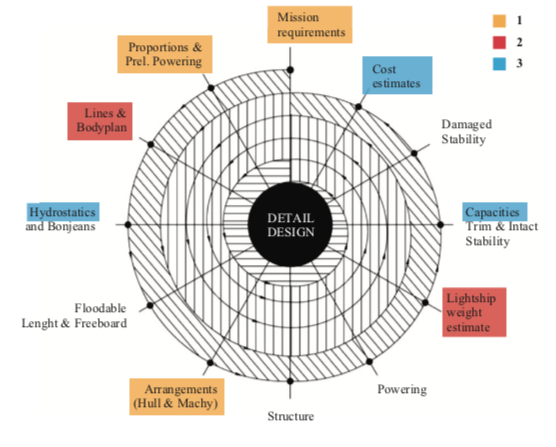Naval Architecture: From Theory to practice
DOI:
https://doi.org/10.25043/19098642.186Keywords:
Design, naval architecture, mission profile, shipbuildingAbstract
The complexity of projecting and designing a ship requires a work sequence that covers at least three main areas: (1) Concept engineering; (2) Basic engineering; (3) Detail engineering. This paper explains the design transition that exists (or should exist) between concept engineering and the final product, emphasizing the existing contractual relationship with the shipbuilder, especially in the initial definition of the project and the influence on construction aspects.
Downloads
References
PAPANIKOLAOU, A. Ship Design, Methodologie of preliminary design. Springer Science Business Media (2014). https://doi.org/10.1007/978-94-017-8751-2
ALVARIÑO, R. AZPIROZ, J. MEIZOSO, M. El Proyecto básico del buque mercante.
BENARD, J. Coursework report - Soton - UK (2015).
FLORES, R. BAOS, R. Diseño NT_451 (2018) - NCH_068 (2001) - NT_233 (2014-16).

Published
How to Cite
Issue
Section
License
The authors who publish in this Journal certify that:
- The work submitted for publication in The Ship Science and Technology journal, was written by the author, given that its content is the product of his/her direct intellectual contribution.
- All data and references to material already published are duly identified with their respective credits and are included in the bibliographic notes and quotations highlighted as such.
- All materials submitted for publication are completely free of copyrights; consequently, the author accepts responsibility for any lawsuit or claim related with Intellectual Property Rights thereof, Exonerating of responsibility to The Science and Technology for the Development of Naval, Maritime, and Riverine Industry Corporation, COTECMAR.
- In the event that the article is chosen for publication by The Ship Science and Technology journal, the author state that he/she totally transfers reproduction rights of such to The Science and Technology for the Development of Naval, Maritime, and Riverine Industry Corporation, COTECMAR.
- The authors retain the copyright and transfer to COTECMAR the right of publication and reproduction of the work which will be simultaneously subject to the Creative Commons Attribution License (CC -BY) , which allows the license to copy, distribute, display and represent the work and to make derivative works as long as it recognizes and cites the work in the manner specified by the author or licensor.
- For more information about the Creative Commons Attribution License (CC -BY) and his use and scope, please visit the following web page https://creativecommons.org/licenses/by-sa/4.0/legalcode








